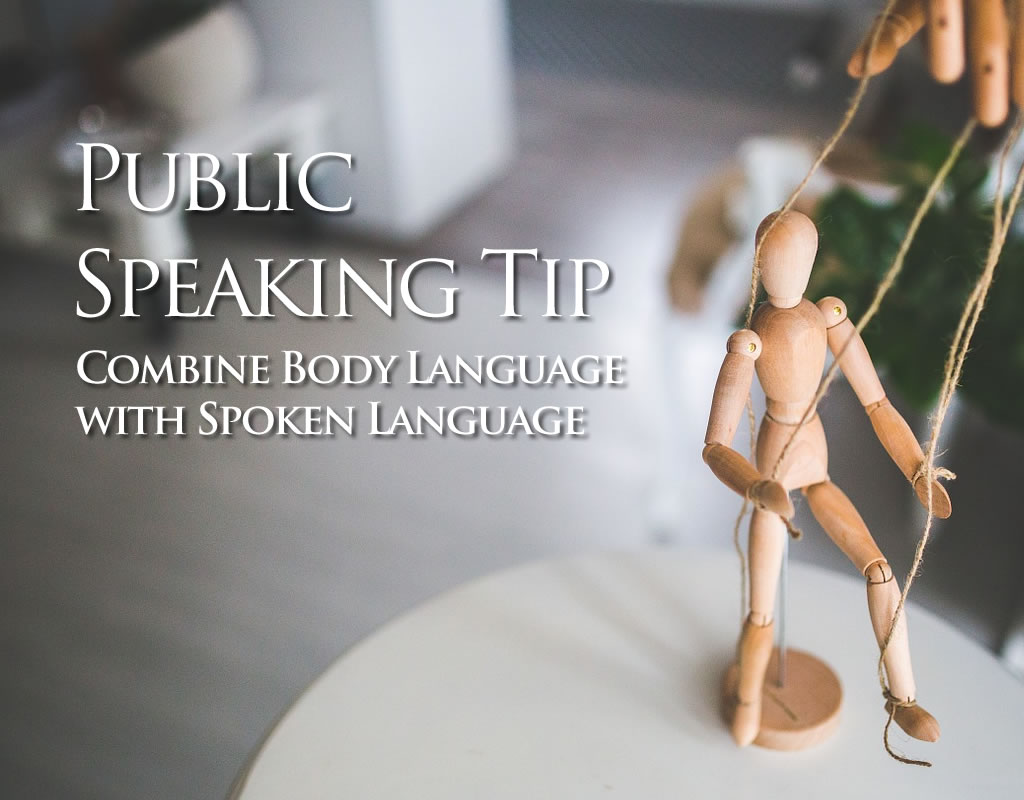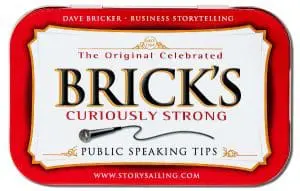Public Speaking Tip: Body Language and Spoken Language

Body language and spoken language: Combine them strategically to enhance audience engagement.
In my 2019 Toastmasters Humorous Speech Contest entry, I parodied the “speaker’s journey” from being paralyzed by fear to joining Toastmasters to becoming a confident presenter. (Toastmasters International is a global organization dedicated to the art of leadership through public speaking. Another tip: Relevance to the audience and relatability gave me an edge. Who would understand that journey more than a roomful of judges and speakers who had taken that journey, themselves?)
 At one point in my presentation, I shared a story about joining Toastmasters and being scheduled to do my “ice-breaker” speech. The goal of this initial presentation is to introduce yourself to other members by talking about your hobbies, work, pets, family—anything comfortable and familiar that interests you. You speak in front of an audience for the first time so you can face your fears in a supportive environment. “Ice-breaker” speeches typically receive a standing ovation. New speakers leave emboldened and ready to speak again.
At one point in my presentation, I shared a story about joining Toastmasters and being scheduled to do my “ice-breaker” speech. The goal of this initial presentation is to introduce yourself to other members by talking about your hobbies, work, pets, family—anything comfortable and familiar that interests you. You speak in front of an audience for the first time so you can face your fears in a supportive environment. “Ice-breaker” speeches typically receive a standing ovation. New speakers leave emboldened and ready to speak again.
In my humorous talk, I pretend to confuse the “ice-breaker” speech with an ice-bucket challenge. I grab a small cooler filled with (plastic) ice and dump it over my head.
Here’s the initial idea (Emphasized words are in bold. Stage directions are underlined, gray text.):
I must have misheard them when they scheduled me to do my ice-breaker speech…
I thought they said “ice bucket challenge.”
Grab the cooler, reach in, and stir the ice so it makes the sound of real ice
Dump the cooler over your head and scream
Ahhhhhhh!
Drop the cooler
Pause to give the audience time to laugh
The gag is unexpected and outrageous. In practice, it got good laughs—always desirable in a humorous speech contest—but my coach (yes, even coaches use coaches) offered an insight that made this same bit much more effective.
“Spoken language and body language are processed by different parts of the brain,” she advised. “Separate them. Do one before the other. Instead of diluting the effect, you’ll double it.”
After some experimentation, I made simple adjustments in the stage direction:
I must have misheard them when they scheduled me to do my ice-breaker speech…
I thought they said “ice bucket challenge.”
Grab the cooler, reach, in and stir the ice so it makes the sound of real ice
Dump the cooler over your head.
Pause for the count of three and share a slowly growing look of frozen shock
Then scream
Ahhhhhhh!
Drop the cooler
Pause to give the audience time to laugh
The body language—the dumping of the ice—comes before the scream. Separating the words from the acting adds only a few seconds to the routine, but those few “too-shocked-to-make-a-sound” seconds delay the shocked scream. The final vocalization becomes a release for both the speaker and the audience.
When you craft your next presentation, think not only about what gestures will best accompany your words, but about how to time that body language relative to those words. In some cases, strong gestures will eliminate the need to speak—to narrate—what happened. Shut up and let your body do the talking. In other cases, think about whether the words or the gestures should come first, or whether it’s best to combine them. No way is right or wrong, but the best way is the result of careful consideration, experimentation, and ideally a few trial runs to validate your choices.


